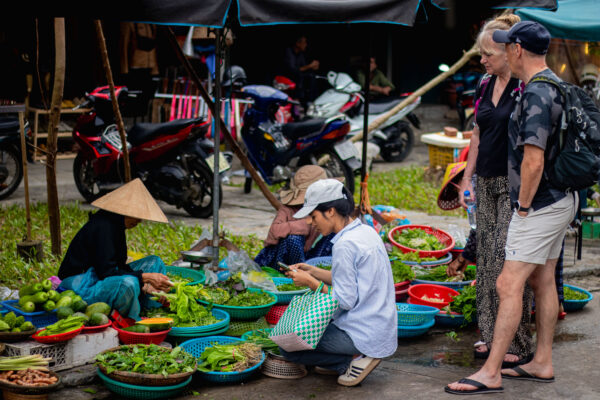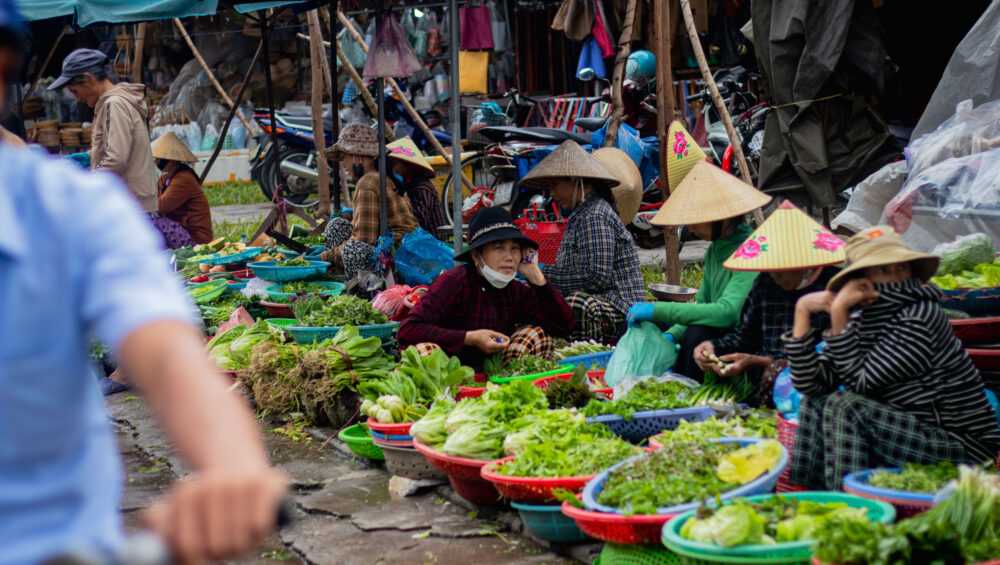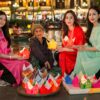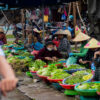1. Location and Atmosphere:
- Riverside Hub: The Central Market is ideally situated on the east side of Hoi An’s Old Town, right by the Thu Bon River, making it easily accessible for both locals and tourists.
- Bustling Energy: From early morning until late afternoon, the market is a hive of activity. It’s a sensory overload in the best possible way – filled with the sounds of vendors calling out, the aroma of fresh produce and cooked food, and a kaleidoscope of colors from fruits, vegetables, spices, and textiles.
- Authentic Local Life: Unlike some more tourist-focused areas, the Central Market remains a crucial spot for locals to do their daily shopping. This offers visitors a genuine glimpse into the rhythms of Vietnamese life.

2. What You’ll Find:
The market is generally divided into various sections, each with its unique offerings:
- Fresh Produce Section: This is where you’ll find an incredible array of fresh fruits (tropical and seasonal), vegetables, herbs, and spices. The produce is often beautifully arranged, and the colors are striking. It’s a great place to see ingredients used in Vietnamese cuisine.
- Seafood Section: Located closer to the river, this area is a bustling hub for freshly caught seafood. You’ll see local fishermen bringing in their daily catch, including fish, shrimp, crabs, and squid. The best time to visit this section for the freshest selection is in the early morning (around 4 AM – 6 AM).
- Meat and Poultry: Another bustling section where local vendors sell various cuts of meat and fresh poultry. This area is generally busiest in the early morning.
- Dry Goods and Spices: Here, you’ll discover a fascinating selection of dried goods like mushrooms, herbs, nuts, and a vast array of local spices. It’s an excellent place to pick up ingredients to try making Vietnamese dishes yourself or as culinary souvenirs.
- Cooked Food Stalls (Food Court): A highlight for many visitors! The Central Market boasts a lively food court where you can sample an incredible variety of Hoi An and Vietnamese specialties at very affordable prices. You’ll find:
- Cao Lau: Hoi An’s signature noodle dish with thick, yellow noodles, pork, herbs, and crispy cracklings.
- Mi Quang: Another regional noodle dish with a rich broth, various toppings, and crispy rice crackers.
- Banh Mi: The world-famous Vietnamese baguette sandwich, filled with meats, pate, fresh herbs, and sauces.
- Banh Xeo: Crispy Vietnamese savory pancakes filled with shrimp, pork, and bean sprouts.
- Fresh spring rolls and fried spring rolls.
- Various sweet treats, smoothies, and local beverages.
- The atmosphere in the food court is lively, with shared tables and a constant buzz of chatter.
- Textiles and Tailoring: Hoi An is famous for its custom tailoring, and within the market or nearby, you’ll find stalls selling a wide variety of fabrics, especially silk. Many tailors can whip up custom-made clothing, from traditional Ao Dai to suits and dresses, often within 24 hours.
- Souvenirs and Handicrafts: While the main Central Market focuses more on daily necessities, you’ll find some stalls selling traditional handicrafts, ceramics (like from Thanh Ha pottery village), lanterns, and other souvenirs. For a more extensive selection of tourist-oriented souvenirs, the Hoi An Night Market (across the bridge on An Hoi Islet) is the primary destination.
3. Tips for Visiting:
- Go Early: For the most authentic and bustling experience, especially to see the freshest produce and seafood, aim to visit in the early morning (before 8 AM).
- Bargain (Politely): Bargaining is common in Vietnamese markets, particularly for non-food items. Do so respectfully and with a smile.
- Be Aware of Surroundings: Like any busy market, keep an eye on your belongings.
- Embrace the Sensory Experience: Don’t be afraid to try new foods, ask questions, and simply soak in the sights, sounds, and smells.
- Stay Hydrated: It can get warm and humid, so carry water.
The Hoi An Central Market is more than just a place to shop; it’s a cultural experience that offers a true taste of local life, flavors, and traditions.




